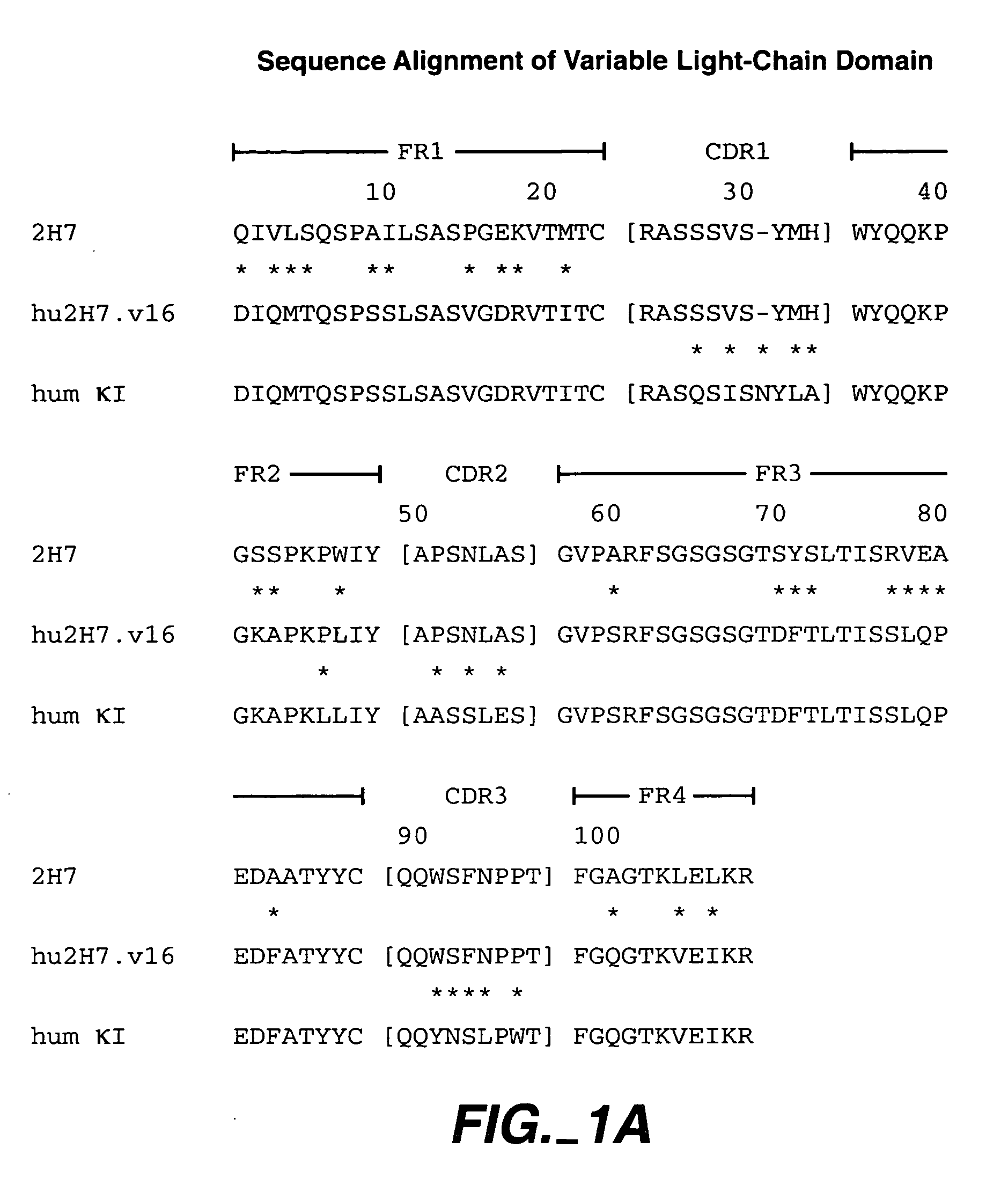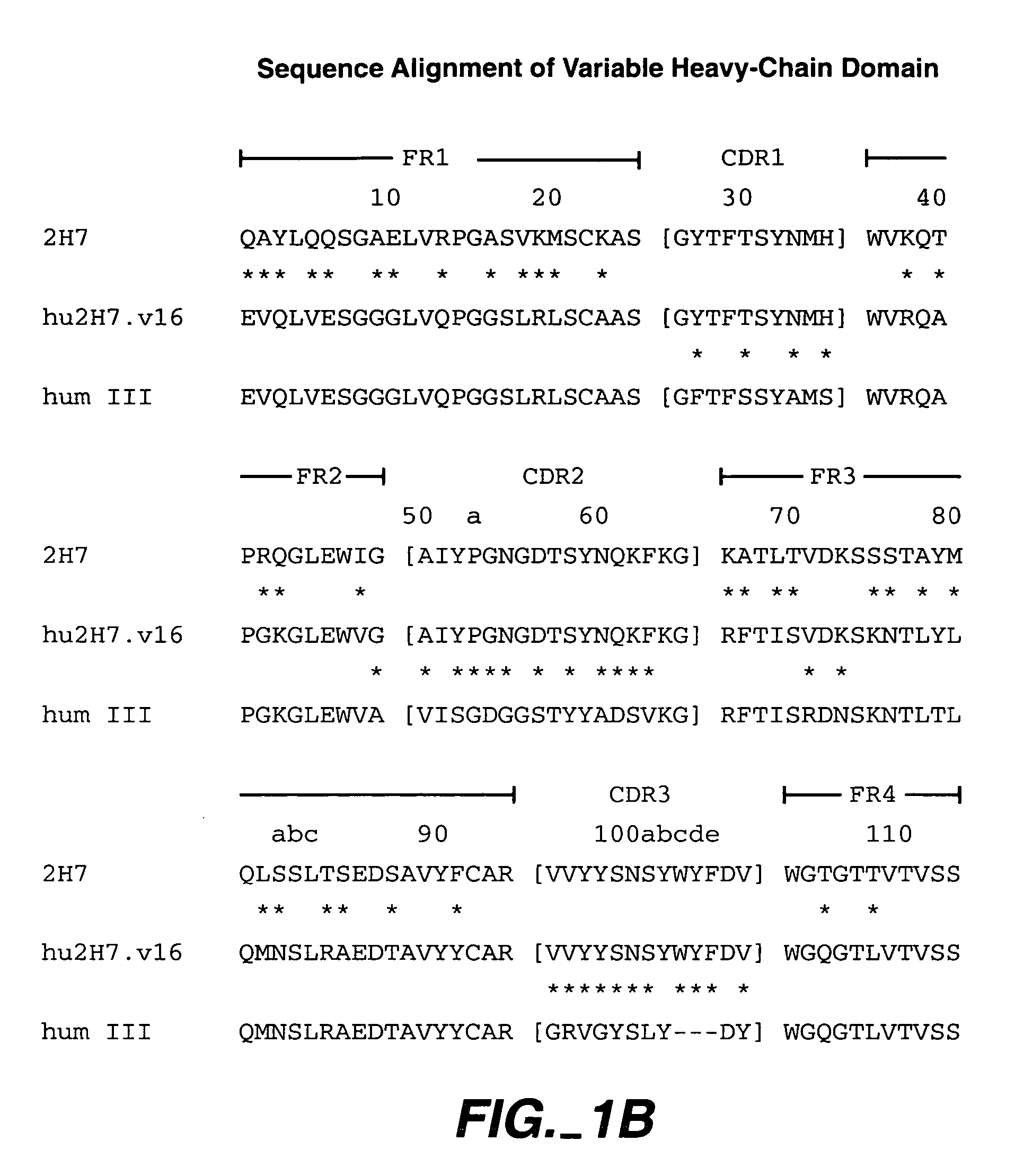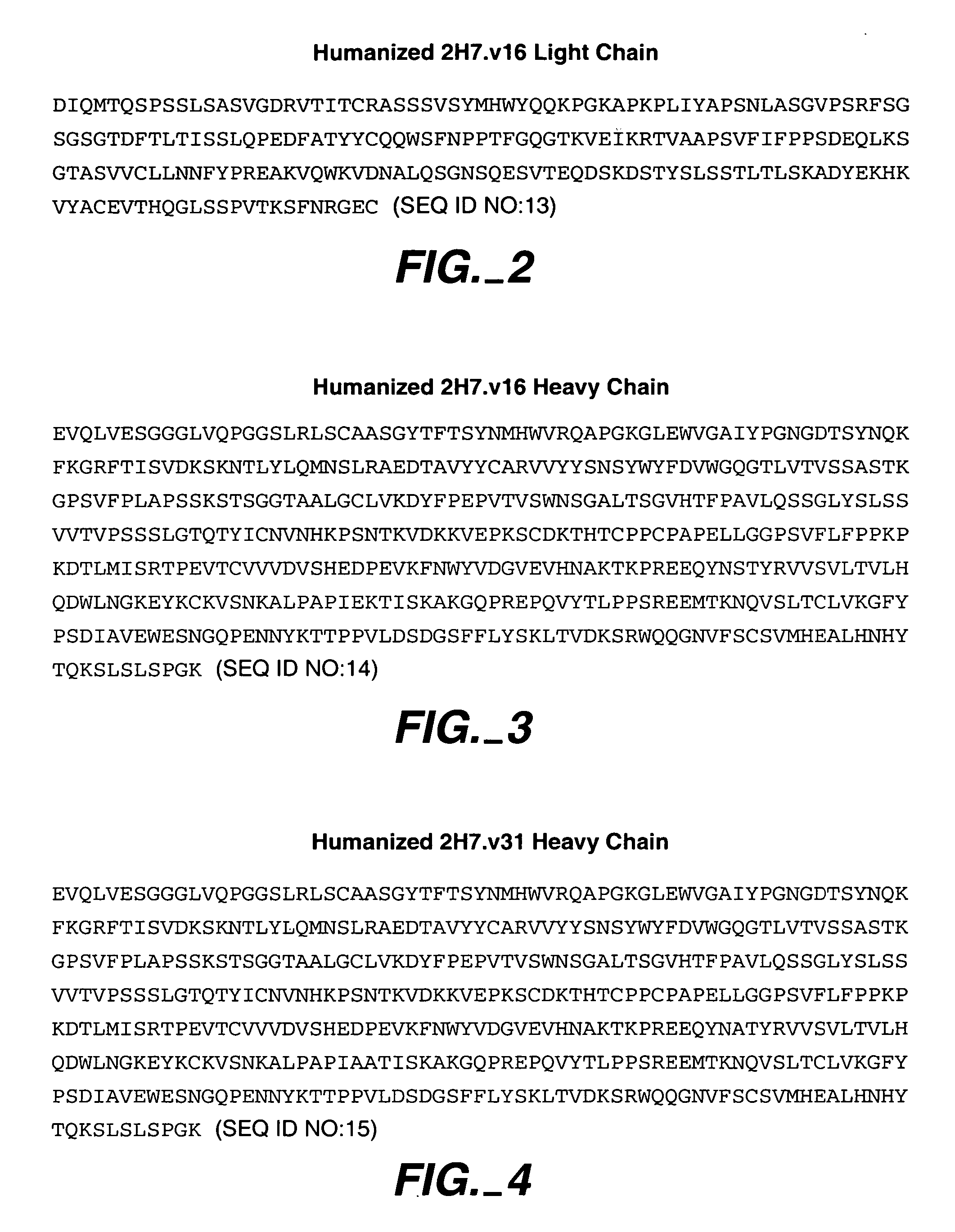Method for treating multiple sclerosis
a multiple sclerosis and treatment method technology, applied in the field of multiple sclerosis treatment methods, can solve the problems known beneficial treatments, and avoiding achieving the effect of reducing the occurrence of exacerbation or accumulation of disability, but not fully preventing
- Summary
- Abstract
- Description
- Claims
- Application Information
AI Technical Summary
Benefits of technology
Problems solved by technology
Method used
Image
Examples
example 1
Treatment of Primary Progressive Multiple Sclerosis (PPMS)
[0214] A subject with diagnosis of PPMS as defined by McDonald et al. Ann Neurol 50: 121-7 (2001) is treated with a CD20 antibody in this example.
[0215] Rituximab, commercially available from Genentech, is formulated for IV administration as a sterile product in 9.0 mg / mL sodium chloride, 0.7 mg / mL polysorbate 80, 7.35 mg / mL sodium citrate dehydrate, and Sterile Water for Injection (pH 6.5).
[0216] The first course of treatment will consist of a dose of 1 g intravenous (IV) Rituximab administered on each of Days 1 and 15. Subjects will receive acetaminophen (1 g) and diphenhydramine HCl (50 mg), or equivalent, by mouth 30-60 minutes prior to the start of each infusion.
[0217] Subsequent courses of treatment will be administered starting at Week 24 (Day 169), Week 48 (Day 337), and Week 72 (Day 505). The second infusion of the subsequent courses of treatment will be 14±1 days after the first infusion.
[0218] Subjects who exp...
example 2
Treatment of Relapsing-Remitting Multiple Sclerosis
[0240] Subjects with RRMS as defined by McDonald et al. Ann Neurol 50: 121-7 (2001) are treated with a CD20 antibody in this example, where the antibody exposures are approximately 6 months apart.
[0241] Rituximab, commercially available from Genentech, is formulated for IV administration as a sterile product in 9.0 mg / mL sodium chloride, 0.7 mg / mL polysorbate 80, 7.35 mg / mL sodium citrate dehydrate, and Sterile Water for Injection (pH 6.5).
[0242] The first course of treatment will consist of a dose of 1 g intravenous (IV) Rituximab administered on each of Days 1 and 15. Subjects will receive acetaminophen (1 g) and diphenhydramine HCl (50 mg), or equivalent, by mouth 30-60 minutes prior to the start of each infusion.
[0243] Subsequent courses of treatment will be administered starting at Week 24 (Day 169), Week 48 (Day 337), and Week 72 (Day 505). The second infusion of the subsequent courses of treatment will be 14±1 days after ...
example 3
Treatment of Relapsing-Remitting Multiple Sclerosis
[0251] A subject with RRMS as defined by McDonald et al. Ann Neurol 50: 121-7 (2001) is treated with a CD20 antibody herein. In this example, the antibody exposures are approximately 1 year apart.
[0252] Rituximab, commercially available from Genentech, is formulated for IV administration as a sterile product in 9.0 mg / mL sodium chloride, 0.7 mg / mL polysorbate 80, 7.35 mg / mL sodium citrate dehydrate, and Sterile Water for Injection (pH 6.5).
[0253] The first course of treatment will consist of a dose of 1 g intravenous (IV) Rituximab administered on each of Days 1 and 15. Subjects will receive acetaminophen (1 g) and diphenhydramine HCl (50 mg), or equivalent, by mouth 30-60 minutes prior to the start of each infusion.
[0254] Subsequent courses of treatment will be administered starting at Week 48, and Week 96. The second infusion of the subsequent courses of treatment will be 14±1 days after the first infusion.
[0255] Preferably R...
PUM
| Property | Measurement | Unit |
|---|---|---|
| Time | aaaaa | aaaaa |
| Time | aaaaa | aaaaa |
| Time | aaaaa | aaaaa |
Abstract
Description
Claims
Application Information
 Login to View More
Login to View More - R&D
- Intellectual Property
- Life Sciences
- Materials
- Tech Scout
- Unparalleled Data Quality
- Higher Quality Content
- 60% Fewer Hallucinations
Browse by: Latest US Patents, China's latest patents, Technical Efficacy Thesaurus, Application Domain, Technology Topic, Popular Technical Reports.
© 2025 PatSnap. All rights reserved.Legal|Privacy policy|Modern Slavery Act Transparency Statement|Sitemap|About US| Contact US: help@patsnap.com



